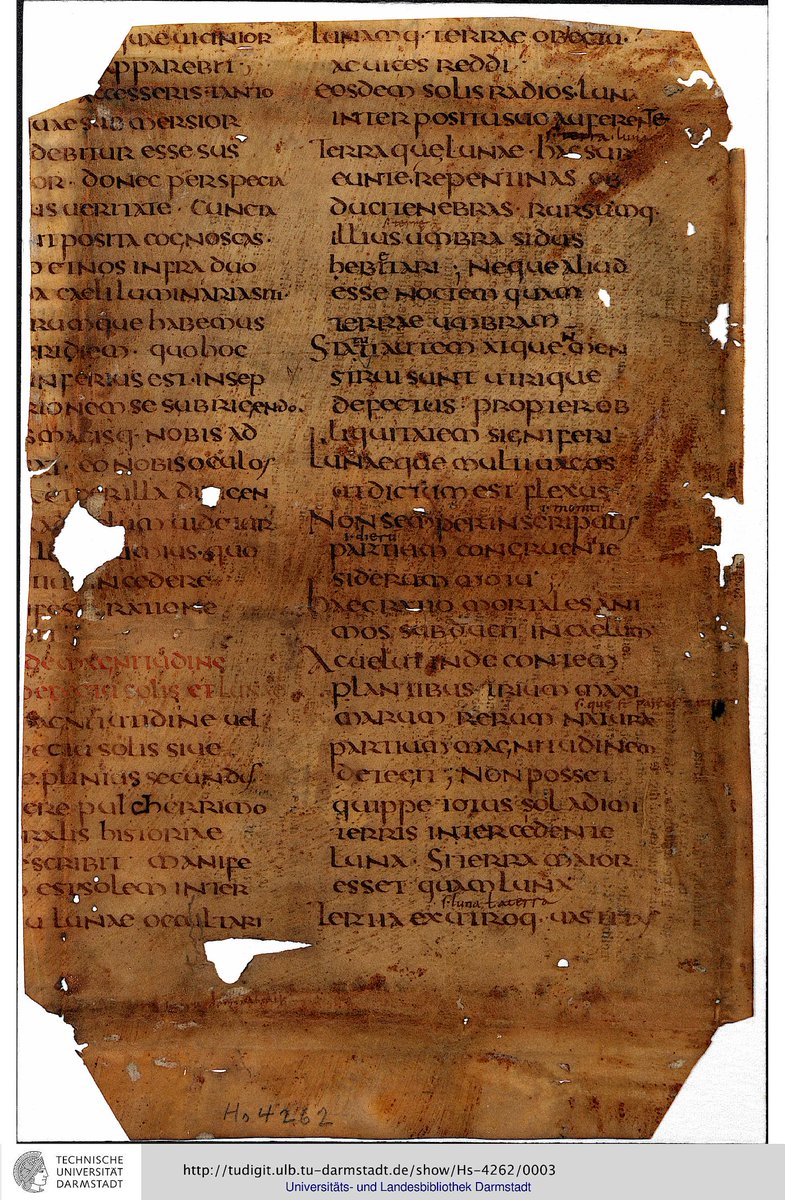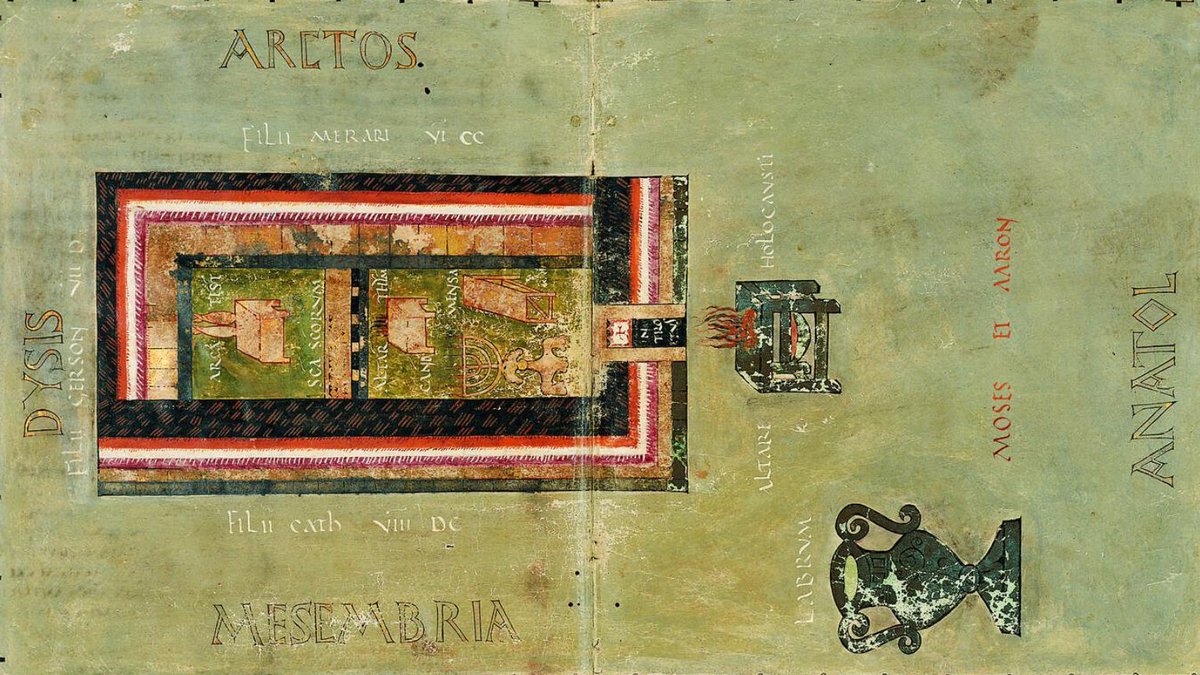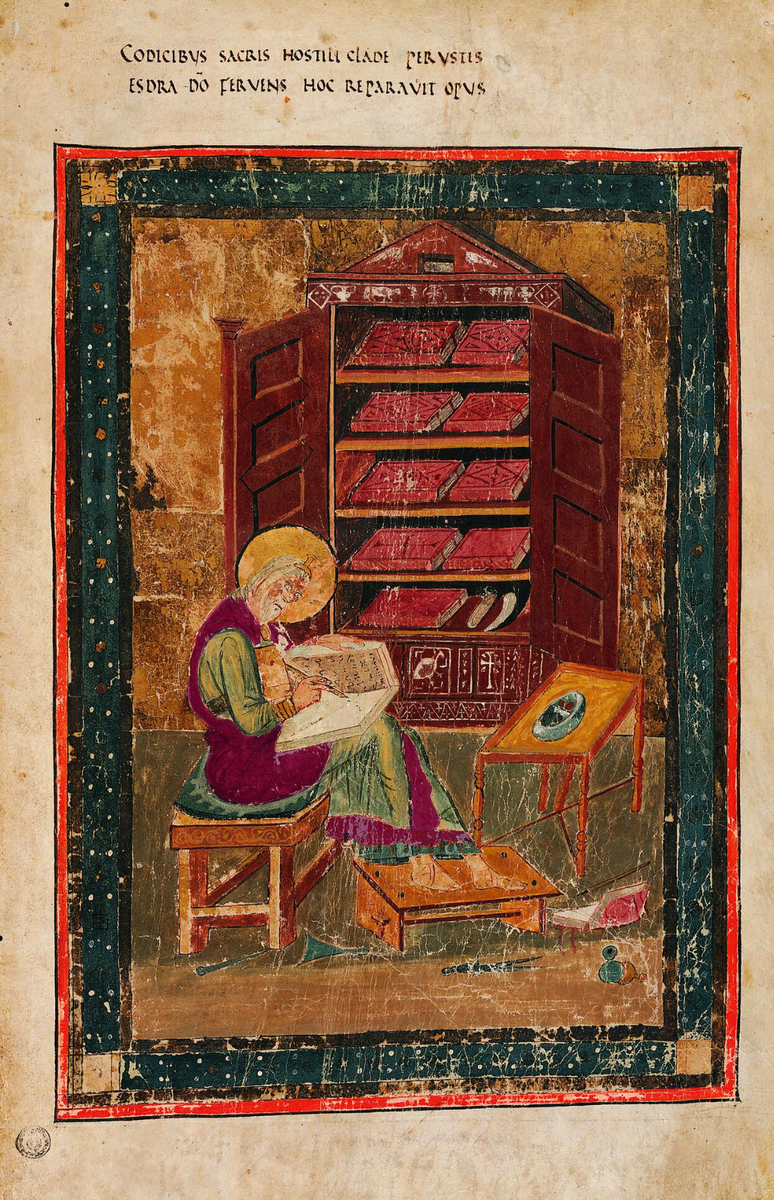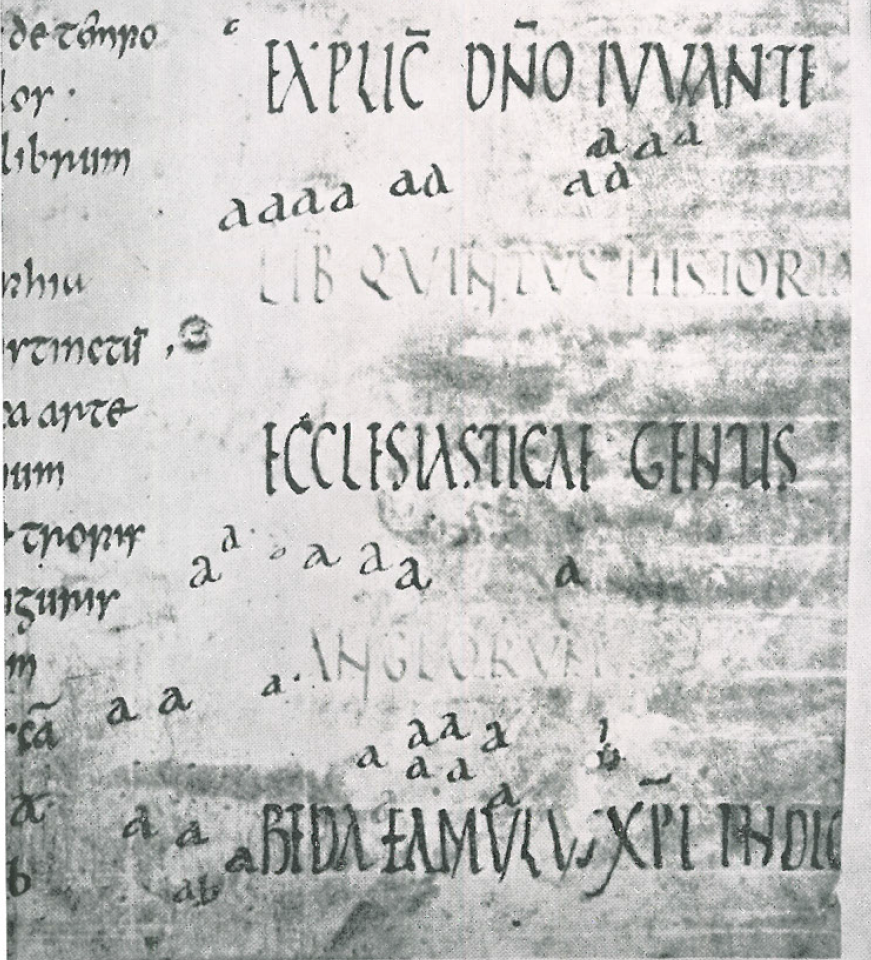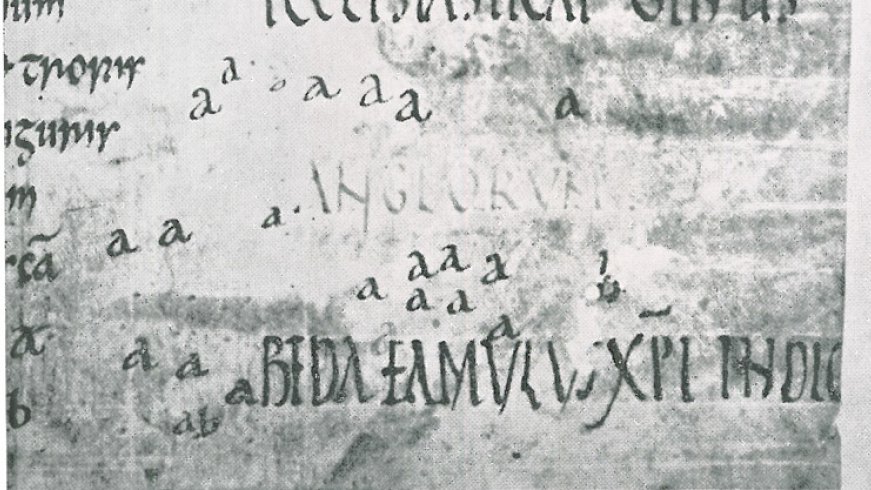Some of you have asked if this fragment, Darmstadt HS-4262, could have been written by Bede. While this seems to be unlikely there is a fascinating story to be told about the search for words written by him.
Looking for an autograph of Bede: a thread 1/ #medieval #manuscripts
Looking for an autograph of Bede: a thread 1/ #medieval #manuscripts
First of all, the twin monastery where Bede lived and created, Wearmouth-Jarrow, was an extremely important scribal centre. It possessed a large library started by its founder Benedict Biscop and expanded by his successor, the abbot in Bede's time, Ceolfrith. 2/
A number of manuscripts produced there in the times of Bede survive. Among them maybe the most fascinating of them all, Codex Amiatinus, the oldest surviving complete copy of the Latin Vulgate Bible. Commissioned by Ceolfrith it was intended for the pope himself. 3/
Codex Amiatinus, today in Florence, as Ceolfrith died en route to Rome, contains an image of Ezra. The thing is... the only way to identify him as Ezra is through the verse above the image. The portrait is based on an earlier exemplar that might have depicted someone else. 4/
In 2005 Paul Meyvaert (there will be a bibliography at the end) has linked the production of CA to Bede's interest in Ezra and proposed that this couplet was placed there by Bede himself. But was it *written* by him? 5/
The couplet is certainly an addition, it is written in a different script than the rest of the Bible and Bede was not only the number one expert on Ezra in Wearmouth-Jarrow but also almost certainly involved in the creation of CA. Plausible? Yes. Solid? Hm... 6/
We can be reasonably sure that Bede was responsible for putting the verse there. But we have not caught him with a smoking pen in his hand. Fortunately there is another candidate but in order to talk about it we need to go to Russia! 7/
Ono of the earliest copies of Bede's Historia ecclesiastica is the so-called Saint Petersburg Bede, NLR, lat. Q. v. I. 18. It ends with a colophon of which the las line is written in a slightly different ink and possibly in a different hand. It reads BEDA FAMVLVS XPI INDIGNVS 8/
In 1958 E. A. Lowe has suggested that this might be a line written by Bede himself. In his hand, with his name. Exciting!
But there are problems. 9/
But there are problems. 9/
St Petersburg Bede contains dated marginal notes that stretch up to 746. Bede died in 735 so that would make impossible for him to "sign" the ready manuscript. This was the chief argument of Wright and Meyvaert who tried to debunk Lowe's suggestion in 1961. 10/
But Bévenot in 1962 has rather convincingly shown that the notes could have been added *after* the body of the manuscript has been completed. Whew! So, we have it? A signature in Bede's own hand? Well, not quite. 11/
You see that faint little a over the F in FAMVLUS? That's a letter-trial. The question is: is it written over or under the text purported to be by Bede? While Lyublisnkaya confirmed that the line differs from the rest, Barashenkov, did confirm that the "a" is slightly erased. 12/
This would mean that the "signature" is a later addition. How late? Hard to tell, not much later probably. Does this absolutely exclude the possibility that Bede was involved? No, if we accept that the marginal notes are a later addition. 13/
It looks that we do not have an "autograph" by Bede. But maybe we are asking the wrong questions? We know that Bede was involved in the production Codex Amiatinus; that HS-4262 was written in his lifetime; that St Petersburg Bede *could* have been written in his lifetime. 14/
Bede is very much present in all those manuscripts. While I can't lie: I would like to have a line that we can confirm as written in his own hand, but hey, he is very close to all those manuscripts! And who knows what treasures are to be found in the library collections... 15/
Bibliography
MSS
HS-4262 http://tudigit.ulb.tu-darmstadt.de/show/Hs-4262
Codex Amiatinus http://mss.bmlonline.it/s.aspx?Id=AWOS3h2-I1A4r7GxMdaR&c=Biblia%20Sacra#/book
St Petersburg Bede: sadly not fully digitised
Literature
Bévenot 1962 https://www.persee.fr/docAsPDF/scrip_0036-9772_1962_num_16_2_3147.pdf
Lowe 1958 https://www.brepolsonline.net/doi/abs/10.1484/J.RB.4.01474?journalCode=rb
Meyvaert 1961 https://www.brepolsonline.net/doi/abs/10.1484/J.RB.4.00463?journalCode=rb 16/
MSS
HS-4262 http://tudigit.ulb.tu-darmstadt.de/show/Hs-4262
Codex Amiatinus http://mss.bmlonline.it/s.aspx?Id=AWOS3h2-I1A4r7GxMdaR&c=Biblia%20Sacra#/book
St Petersburg Bede: sadly not fully digitised
Literature
Bévenot 1962 https://www.persee.fr/docAsPDF/scrip_0036-9772_1962_num_16_2_3147.pdf
Lowe 1958 https://www.brepolsonline.net/doi/abs/10.1484/J.RB.4.01474?journalCode=rb
Meyvaert 1961 https://www.brepolsonline.net/doi/abs/10.1484/J.RB.4.00463?journalCode=rb 16/
Meyvaert 1996 https://www.jstor.org/stable/2865722?seq=1#metadata_info_tab_contents
Meyvaert 2005 https://www.jstor.org/stable/20463495?seq=1#metadata_info_tab_contents
Wright 1961 https://www.brepolsonline.net/doi/10.1484/J.RB.4.00462?mobileUi=0 17/
Meyvaert 2005 https://www.jstor.org/stable/20463495?seq=1#metadata_info_tab_contents
Wright 1961 https://www.brepolsonline.net/doi/10.1484/J.RB.4.00462?mobileUi=0 17/

 Read on Twitter
Read on Twitter